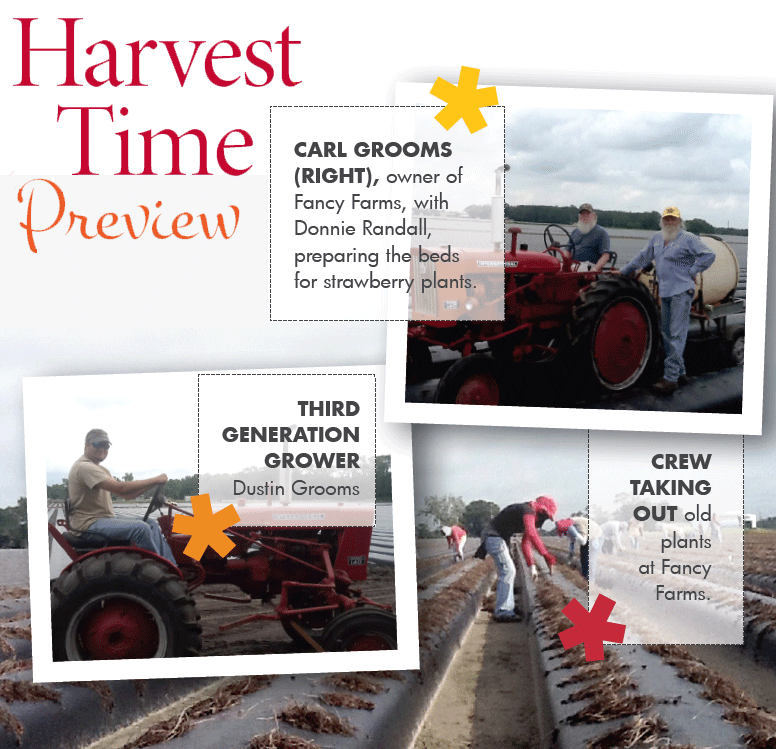As you enjoy a sweet bowl of strawberry shortcake this season, know that many weeks of planning, tending, and caring for crops went into this delectable treat that is, and has been for many years, the signature of Plant City.
Carl and Dee Dee Grooms, of Fancy Farms, have been farming for more than 30 years. Grooms explains, “Farming is something that we love and have a heartfelt commitment to. We feel that we need to help keep farming of any kind alive and growing.”
Preparing for a season of growing strawberries is no simple task. In June, a cover crop of iron and clay peas has to be planted in order to put nutrients back in the soil. It also keeps the soil from eroding and the weeds from growing. Grooms says, “After eight weeks, the cover crop is mowed and cut back into the soil. The soil is tilled 10 times in August.” In September, the beds are formed, the drip system is installed, and the plastic is fitted over the beds. “All planting is done by hand,” points out Grooms.
With 30 field workers and five drivers, Grooms can finish 15 acres a day.
The cost per acre, from cover crop to laying plastic, is $10,000. It takes 18,000 strawberry plants to cover one acre, costing an additional $2,340.
Despite this high cost for production, Grooms and many other growers will make their plans, plant their crops, and work the land for what hopefully will be a successful harvest come December through April.
Credit
story by DALE BLISS

